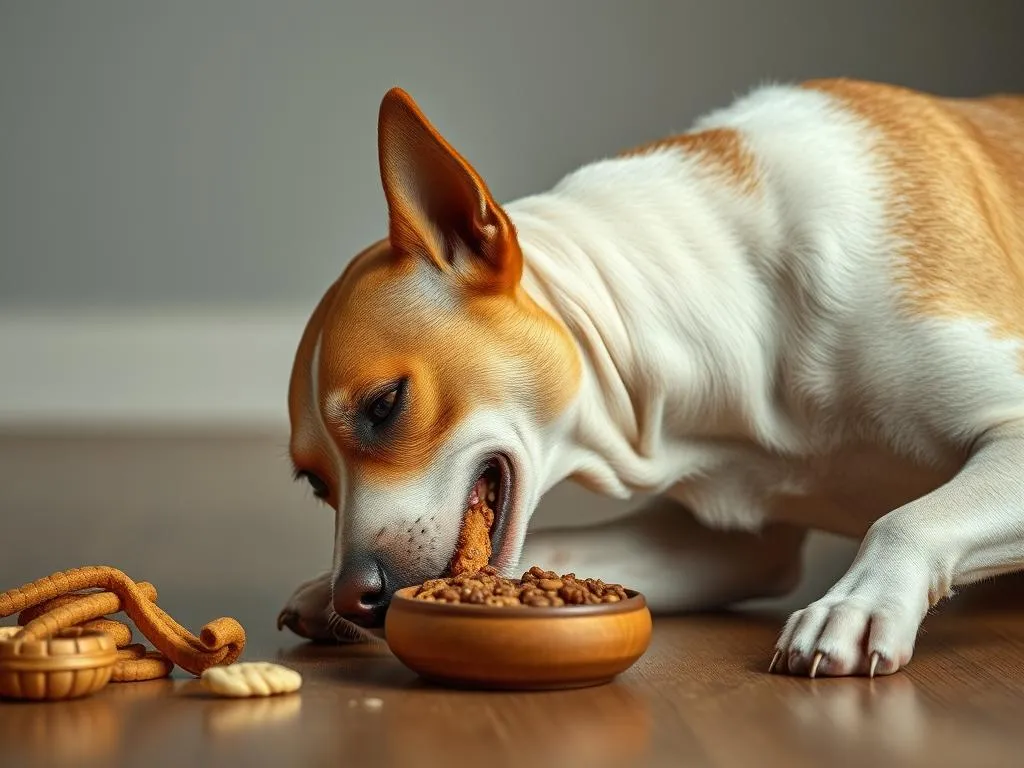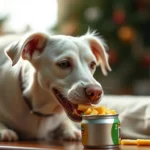
Introduction
Proper nutrition is essential for maintaining your dog’s health and well-being. Just like humans, dogs need a balanced diet that meets their nutritional requirements. However, many pet owners encounter common issues related to their dog’s feeding habits, including the troubling tendency of some dogs to gulp down their food without chewing. Understanding how to get your dog to chew his food is vital not only for digestion but also for overall health.
Chewing plays a crucial role in the digestive process. It breaks down food into smaller pieces, making it easier for the digestive system to process. Moreover, chewing contributes to dental health, helping to keep teeth and gums clean and healthy. Therefore, it’s important to address this issue and explore effective strategies for encouraging your dog to chew his food.
This article will delve into the problem of dogs not chewing their food and provide you with tips and strategies to enhance your dog’s eating habits, ultimately improving their health and happiness.
Understanding Dog Chewing Behavior
The Natural Instinct to Chew
Chewing is a natural behavior for dogs, rooted deep in their evolutionary background. In the wild, dogs would hunt for their food, which often required tearing and chewing through tough meat and bones. This instinctual behavior helped them obtain essential nutrients and maintain their dental health. Chewing served multiple purposes: it allowed them to eat their prey more effectively, kept their jaws strong, and helped clean their teeth.
Reasons Why Some Dogs Don’t Chew
Despite the natural inclination to chew, some dogs may not engage in this behavior effectively. Several factors can contribute to this:
-
Health Issues: Dental problems or oral pain can discourage dogs from chewing. If a dog experiences discomfort while eating, he may opt to swallow his food whole instead.
-
Behavioral Issues: Anxiety or excitement can lead dogs to eat too quickly, bypassing the chewing stage altogether. Dogs that are overly eager to eat may not take the time to chew their food properly.
-
Food Texture and Size: The type of food you provide can influence your dog’s chewing habits. If the kibble is too small or too soft, your dog may find it easier to swallow without chewing.
Understanding these underlying issues is the first step in addressing your dog’s chewing behavior.
Importance of Chewing for Dogs
Digestive Health
Chewing is crucial for proper digestion. When a dog chews his food, it breaks the food down into smaller particles, making it easier for the stomach to digest. Additionally, chewing stimulates the production of saliva, which contains enzymes that aid in breaking down carbohydrates and fats. If a dog swallows food whole, it can lead to digestive issues such as bloating or gas.
Dental Health
Chewing is also vital for maintaining healthy teeth and gums. As dogs chew on food and treats, the mechanical action helps to remove plaque and tartar buildup from their teeth. This natural cleaning process plays a significant role in preventing dental diseases, which can lead to serious health issues if left untreated.
Mental Stimulation
Chewing serves as a form of mental engagement for dogs. It can help alleviate boredom and reduce destructive behaviors that may arise from a lack of stimulation. Providing dogs with opportunities to chew can keep them occupied and satisfied, preventing negative behaviors caused by anxiety or frustration.
Factors Influencing Chewing Habits
Type of Dog Food
The type of food you choose for your dog can significantly influence his chewing habits. Kibble, for example, is generally designed to promote chewing, whereas wet food may not provide the same level of texture. When selecting dog food, consider the following:
-
Kibble vs. Wet Food: Kibble often requires more chewing than wet food, making it a better option for promoting this behavior. Look for kibble that is larger in size, as this can encourage your dog to chew rather than gulp.
-
Grain-Free vs. Grain-Inclusive: Some dogs may respond better to different types of dog food. Grain-free options may have different textures that can encourage chewing, while grain-inclusive options may provide better digestibility.
Feeding Environment
The environment in which your dog eats can also affect his chewing habits. A calm, quiet space can help your dog focus on his meal, while distractions—such as noise or other pets—can lead to hurried eating. Creating a peaceful feeding environment can encourage your dog to take his time and chew his food properly.
Dog’s Age and Health
Your dog’s age and health status can play a significant role in his chewing habits. Puppies, for instance, are often still learning how to chew effectively, while senior dogs may have health issues that affect their ability to chew. Special considerations should be made for:
-
Puppies: Young dogs may need softer food or smaller kibble to help them learn the chewing process.
-
Senior Dogs: Older dogs might have dental issues or other health concerns that could prevent them from chewing effectively. In such cases, softer or specially formulated foods may be necessary.
Tips to Encourage Chewing
Choosing the Right Food
One of the most effective ways to encourage chewing is to choose the right food. Look for:
-
Kibble That Promotes Chewing: Select kibble that is specifically designed to be crunchy and larger in size, which can encourage your dog to chew properly.
-
Dental Chews and Treats: Incorporate dental chews or treats that are designed to promote chewing. These products not only provide a satisfying chewing experience but also contribute to dental health.
Implementing Feeding Strategies
Feeding strategies can significantly influence your dog’s chewing habits. Consider trying the following methods:
-
Slow Feeding Bowls: These specially designed bowls can slow down your dog’s eating pace by making it more difficult to gulp down food quickly. The raised sections in these bowls encourage dogs to take smaller bites and chew more thoroughly.
-
Puzzle Feeders: Interactive puzzle feeders require dogs to solve a challenge to access their food, promoting a slower eating pace and encouraging chewing.
-
Dividing Meals into Smaller Portions: Instead of offering one large meal, consider dividing it into smaller portions throughout the day. This can help your dog focus on chewing each portion more thoroughly.
Enhancing the Eating Experience
Creating a pleasant and engaging eating experience can encourage your dog to chew his food more effectively. Here are some tips to enhance mealtime:
-
Calming Atmosphere: Ensure that your dog’s eating area is calm and free from distractions. This may include turning off loud noises or keeping other pets away during mealtime.
-
Interactive Feeding Techniques: Incorporate interactive feeding methods, such as hiding treats in toys or using feeding mats, to make mealtime more engaging and encourage chewing.
Positive Reinforcement Techniques
Using positive reinforcement can also help encourage your dog to chew his food. Consider the following techniques:
-
Rewarding Chewing Behavior: Whenever you notice your dog chewing his food, offer praise or small treats as a reward. Positive reinforcement can help reinforce the behavior you want to see.
-
Training Sessions: Incorporate basic training sessions around mealtime to encourage your dog to chew. For example, you can ask your dog to perform a command before allowing him to eat, promoting a more focused and deliberate eating experience.
Monitoring and Adjusting
Observing Changes in Chewing Habits
As you implement these strategies, it’s important to monitor your dog’s chewing habits. Look for signs that your dog is chewing more effectively, such as:
- Taking longer to finish meals
- Showing interest in chewing toys or dental chews
- Reduced instances of digestive issues
Tracking these changes can help you understand what works best for your dog and whether additional adjustments are needed.
Consulting with a Veterinarian
If you notice persistent issues with your dog’s chewing habits or any signs of discomfort, it’s crucial to consult with a veterinarian. Regular check-ups are essential for maintaining your dog’s dental health and overall well-being. A veterinarian can provide recommendations tailored to your dog’s specific needs, especially if there are underlying health concerns.
Conclusion
Encouraging your dog to chew his food is an important aspect of promoting his overall health. From enhancing digestive and dental health to providing mental stimulation, the benefits of chewing are numerous. By understanding your dog’s chewing behavior and implementing effective strategies, you can create a healthier eating environment for your furry friend.
In summary, focus on choosing the right food, implementing feeding strategies, and enhancing the eating experience while using positive reinforcement techniques. These steps can significantly improve your dog’s chewing habits, leading to long-term health benefits and a happier, healthier life for your dog. Embrace these tips and see how they can transform your dog’s mealtime into a more enjoyable and beneficial experience.









